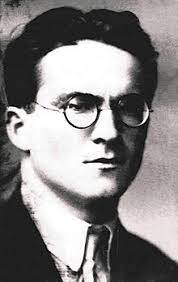Eliade, Mircea

Bio: (1907–86) Romanian religious historian and professor of religious studies. Eliade received his M.A. with a thesis on Italian philosophy at the University of Bucharest, and in 1928 went to India to study Indian philosophy and Sanskrit at the University of Calcutta. During his time in India, he learned the practice and philosophy of yoga, and spend six months in the ashram. After three years in India, he returned to Romania and got his P.hd. with a thesis on yoga in 1933, which was later published as Yoga: Immortality and Freedom (1958b). He spent a few years teaching at the University of Bucharest but was forced to leave Romania for political reasons in 1940. After WW II Eliade become a visiting professor at the Ecole des Hautes Etudes of the Sorbonne. In 1956 he moved to the US where he become a Professor of the History of Religions at the Divinity School of the University of Chicago. Eliade is regarded as a founder of the scientific disciplines of religious studies and the history of religion, and he co-founded the journal History of Religions. Eliade wrote on many religious subjects: yoga, shamanism, alchemy, Australian religions, Indian religions, and the religion of Romania.
Building on a tradition of comparative studies of the religion of authors like Friedrich Max Müller and C. P. Tiele, Eliade regarded religion as a subject of a distinct scientific field – religious studies - and not the subject of other social sciences like sociology, anthropology, psychology, etc. The theoretical basis of his approach to religion is laid out in two important books: The Myth of the Eternal Return (1954), and The Sacred and the Profane: The Nature of Religion (1959a). Eliade states that the focus of religious studies should be on the origin and function of religion. The origin and function of religion, according to Eliade, is to enable adherents to make a contact with God. This hypothesis makes the foundation of the theoretical approach of religious studies, while the methodical rule is to present any religion from the point of view of a believer, like it is completely true. The goal is to understand belivers „behavior and mental universe“. Eliade acknowledges that the meaning of most religious symbols is unconscious. Myths, rituals, and symbols are the focus of Eliade's study of religion. On the other hand, he sees the behavior of even the most irreligious people as still guided by religious, myths, rituals, and symbols.
The source of religion is a yearning for an encounter with God. The „sacred“ are places and times that religion provides to the believer so she or he can have an encounter with God. God is more likely to appear where it appeared before and that's why, even if a god is omnipresent, believers will go to the religious site to seek out God. Cosmogonies or myths of creation are specifically important because God was closest to people during or after creation. These myths serve to transport believers to the time of the creation so they can be close to God. Cosmogonies are supreme manifestations of divinity and creativity, and religious man wants to be „in statu nascendi“, or when the world was born. For Eliade myths and the quest for God are the goals by themselves, and not means to an end. He acknowledges that religion can have cultural, social, economic, and psychological benefits, but he rejects the view that cultural, social, economic, and psychological factors can influence religion and its development. Eliade is also famous for the introduction of many new scientific terms: axis mundi, coincidentia oppositorum, hierophany, sacralize, theophany, homo religiosus, homo symbolicus, illud tempus, imago mundi,
Eliade edited two multi-volume books on religion and the history of religion - A History of Religious Ideas, 3 Vols. (1978–85), and Encyclopedia of Religion, 16 Vols. (1987). In his other books Eliade researched different religious topics like alchemy in The Forge and the Crucible (1956), shamanism as a pan-human phenomenon in Shamanism: Archaic Techniques of Ecstasy (1964), and the religion of East Europe in Zalmoxis: The Vanishing God:Comparative Studies in the Religious and Folklore of Dacia and East Europe (1972).
Fields of research
Animism Anthropology Atheism Body Buddhism and Hinduism Caste Christianity Church Collective Conscience Community Sects and Cults Culture History Identity Magic Myth Orient Psychology Religion Sign and Symbol TimeTheoretical approaches
Analytical (Jungian) PsychologyMain works
The Myth of the Eternal Return (1954);
The Forge and the Crucible (1956);
Patterns in Comparative Religion (1958a);
Yoga: Immortality and Freedom (1958b);
The Sacred and the Profane: The Nature of Religion (1959a);
„Methodological Remarks on the Study of Religious Symbolism“, in: Eliade, M, and J. M. Kitagawa (eds.) The History of Religions: Essays in Methodology (1959b);
Myth and Reality (1963);
Shamanism: Archaic Techniques of Ecstasy (1964);
The Quest: History and Meaning in Religion (1969);
Zalmoxis: The Vanishing God:Comparative Studies in the Religious and Folklore of Dacia and East Europe (1972);
A History of Religious Ideas, 3 Vols. (1978–85);
(ed.) Encyclopedia of Religion, 16 Vols. (1987).

